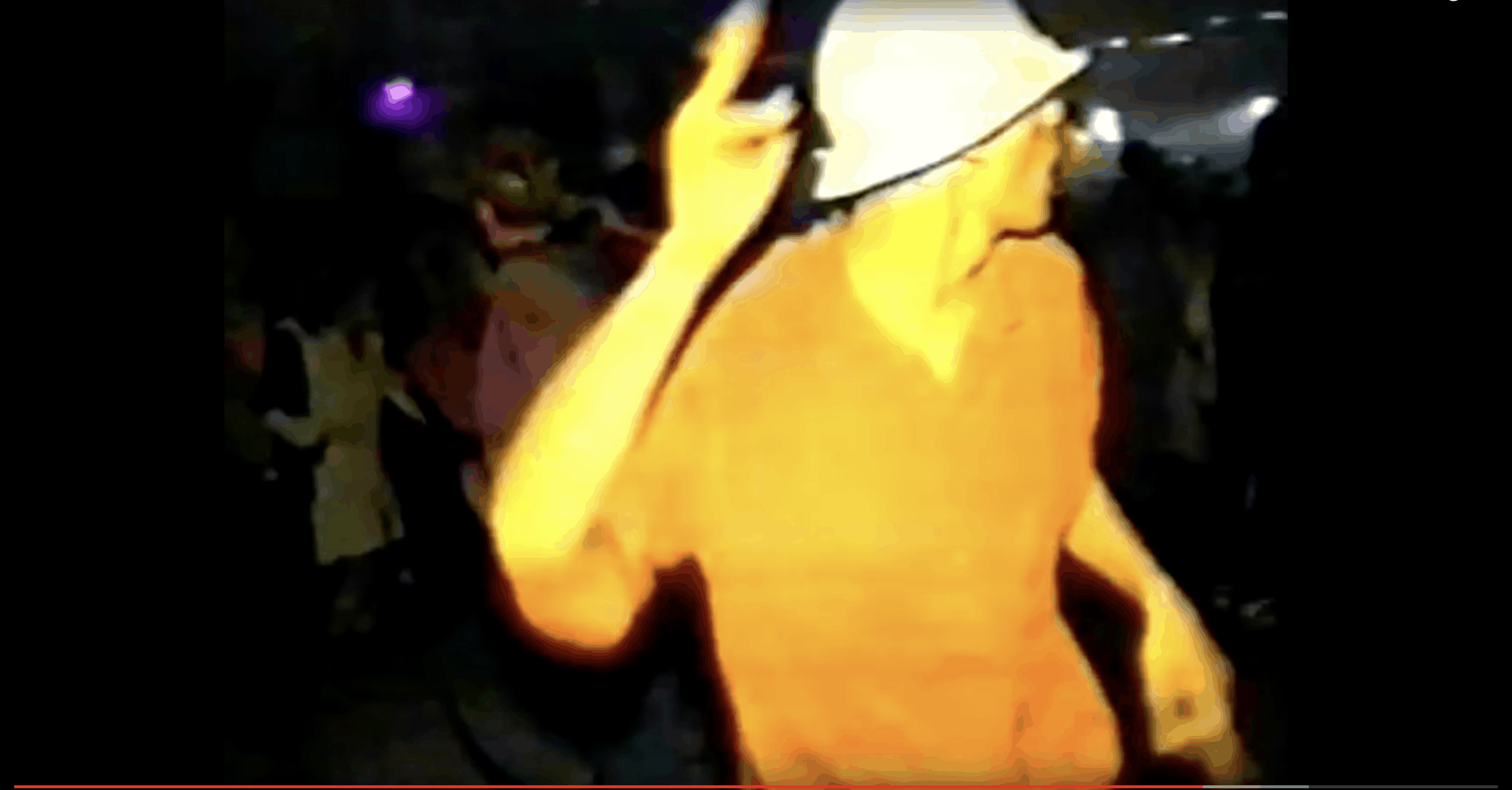
People are sitting down with their backs against the underpass. The backdrop for O’ Magic Power of Bleakness, Mark Leckey’s new installation at the Tate Britain, featuring old and new work, is a motorway bridge underneath the M53.
The space is defined by the warring impulses of presence, absence, and the presence of absence; there are spectators, watching the two films (Fiorucci Made me Hardcore 1999 and Dream English Kid 1964-1999 AD 2015), and the stunning interplay of video, sound, and light that precedes them: Under, Under In.
The space is defined by the warring impulses of presence, absence, and the presence of absence
Under, Under In begins with projections on the wall behind the underpass. A group of young boys talking about Dead Space 3, and Half-Life 2. The installation loops every hour, on the hour. These projections of young men are ghosts in an almost classical sense, forever repeating the same words and motions whenever they’re conjured.
There are fragments of disembodied dialogue throughout this piece, phrases like “come with me,” and “you’re away with the fairies, Mark,” comments that hint at the idea of something beyond the real and the physical. As the title of the installation suggests, there’s a darkness running through Under, Under In, and the films that are shown after it, but it never feels bleak. There are moments, tricks of light, that are legitimately breath-taking; as the room fades into darkness, one ray of light shines from a corner of the room, and towards the underpass.
There’s a darkness running through Under, Under In, and the films that are shown after it, but it never feels bleak
It hints at something, not just a haunted darkness, but a very specific optimism; the kind that comes from the perfect escape at the perfect moment, when you hear the right song at just the right time, and it somehow takes you away from everything that surrounds you.
Escapism, the need for it, and its failure to really facilitate any kind of escape, exists in all of the work shown in O’ Magic, with disappearance and escape taking on the dimension of horror and haunting in Under, Under In, while the two films piece together the escapist fantasies of nightclubs, intercut with realities and anxieties that not even the perfect song can keep away.
In one striking, frightening sequence, there are scenes of people dancing in a nightclub, but the music and movements are disconnected; in spite of what’s shown, what’s heard feels dangerous, like the build-up to a kill in a horror film. That’s because these scenes, and all of the escape that they promise, are shown in contrast to nuclear war games, a computer screen showing missiles travelling to South Korea.
Then everything turns red. The moon, the sky, everything the light touches. Images become uncertain and difficult to decode; something that may or may not be a mushroom cloud slowly comes into form. Fiorucci and Dream English Kid have apocalyptic concerns, with both a lower and upper-case “a.”
Then everything turns red. The moon, the sky, everything the light touches.
While the big picture anxiety of nuclear war is dramatised, the things that people hope to escape, in nightclubs, in TV, or in an underpass, area brought to life. Walls covered in graffiti, dilapidated estates, places that have been left behind; a world that isn’t everything one might have hoped. And if that happens, then escape becomes the only option.
While at first the new installation and old films might seem disconnected from each other, the more of the films that gets seen, the clearer it becomes that they exist in a dialogue. Both use technology; Under, Under In has scenes filmed on snapchat, but the films shown afterwards have, understandably, older technology. The tech on display in these films is outdated; the covers of pornographic films are shown, a kind of escape that went extinct as soon as people realised they could upload videos to the internet.
The music and culture in both Fiorucci and Dream England Kid feels lost, too organic for an era defined by how it relates to the digital. But all of Leckey’s work here, both new and old, is about the thing that come out at night: hopes for the future and dreams of escape, as well as terrifying anxieties, and the ghosts of the people, places, and things, that are never really left behind.


